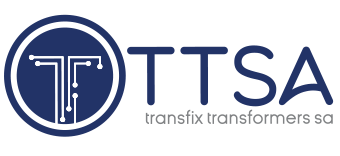The Energy Regulator has rescinded its approval, made in December, of the so-called Electricity Price Determination Methodology Rules (EPDMR), which were proposed for implementation in the 2025/26 financial year as a replacement to the prevailing multiyear price determination methodology (MYPDM) for setting tariffs. The decision was made by the National Energy Regulator of South Africa’s (Nersa’s) highest decision-making structure during a meeting on June 27 and confirmed in a statement issued on July 2.
About half of the 237 turbine blades and other components required for the Koruson 1 cluster of wind farms, being built on the border of the Eastern and Northern Cape provinces, have been delivered to site. The Koruson 1 cluster comprises the Phezukomoya, San Kraal and Coleskop wind farms and is being developed as part of Round 5 of the Renewable Energy Independent Power Producer Programme.
South Africa is seeking to alter the terms of a landmark agreement under which it promised to cut its reliance on coal in exchange for access to financing. The government of President Cyril Ramaphosa is pushing to renegotiate a deal with Climate Investment Funds (CIF), a group tied to the World Bank, so that it won’t be required to close three coal-fired power plants in the coming years. The plants, owned and operated by Eskom Holdings, are among the country’s biggest polluters, according to government advisers.
The South African Photovoltaic Industry Association (SAPVIA) has expressed surprise at government’s decision to introduce a 10% import duty and rebate on “photovoltaic cells assembled in modules or made up into panels” in the absence of consultations with domestic consumers. The trade measure has also been implemented ahead of the formal launch of the South African Renewable Energy Masterplan (SAREM), which is meant to guide the industrialisation of renewable-energy value chains. The launch of SAREM is believed to be imminent, with some of the contents of the plan having already been reported in the media.
Following six months of testing and optimisation, State-owned Eskom has transferred Unit 5 of the Kusile Power Station to its Generation division, and this unit will now begin contributing power, increasing Kusile Power Station’s total output to 4 000 MW. Over the past six months, Kusile Unit 5 has undergone a series of tests while intermittently supplying electricity. Since its synchronisation in December 2023, the unit has met performance expectations, supported the grid and helped to reduce loadshedding.
The National Transmission Company South Africa (NTCSA) has officially begun trading, establishing the NTCSA as a duly constituted separate, distinct and wholly owned subsidiary of State-owned utility Eskom. This marks a significant step in the Department of Public Enterprises’ (DPE’s) roadmap for Eskom towards a reformed electricity supply industry.
The decision to establish a separate energy portfolio with the African National Congress’s Dr Kgosientsho Ramokgopa as Minister and the Democratic Alliance’s Samantha Graham as Deputy Minister has been welcomed by stakeholders and commentators alike. There are already warnings, however, that the success of the new Electricity and Energy Ministry will be judged not only on ensuring a permanent end to loadshedding but on whether it is able to shepherd South Africa, justly, through the unfolding energy transition in a way that addresses not only the immediate threats to security of supply and affordability but also long-term sustainability and competitiveness.
INDUSTRY NEWS
- NERSA appoints Electricity Market Advisory Forum to guide power-market reformDecember 19, 2025 - 2:04 pm
- Eskom offers more details on envisaged roles of the NTCSA and the TSODecember 18, 2025 - 11:04 am
- NTCSA says any electricity deal to salvage Mozal must ensure its financial sustainabilityDecember 17, 2025 - 3:01 pm
WHERE TO FIND US
Address
9 Yellow Street
Botshabelo Industrial Area
Botshabelo, Free State
Call / Email Us
Tel: +27 (0) 61 956 6772
Email: info@transfix.co.za
